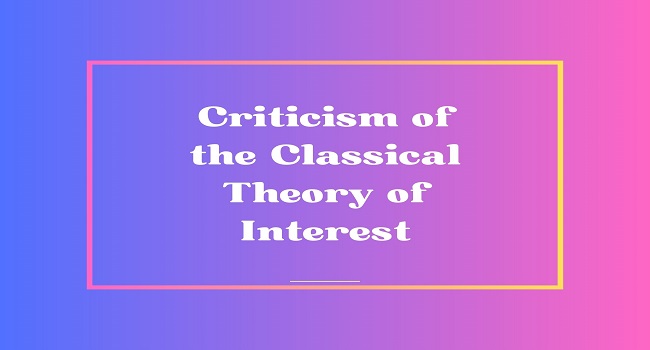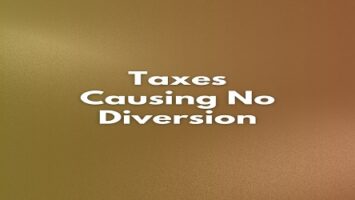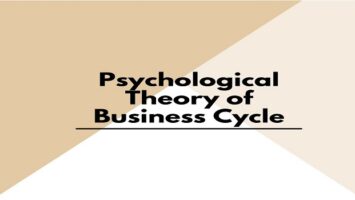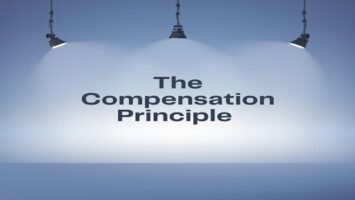Criticism of the Classical Theory of Interest:
The theory has been criticized on several grounds. Keynes has been a prominent critic of this theory. Firstly, as pointed out by Keyness, the equality between saving and investment was brought about by changes in the level of income and not by the rate of interest as asserted by the classical economists. In other words, the rate of interest did not act as the equilibrating mechanism between saving and investment.
Secondly, it is pointed out by Keynes that savings do not affect the rate of interest in any significant manner. Likewise, he argued that changes in investment did not affect the rate of interest, although he recanted from this position later on and admitted that changes in investment could affect the rate of interest. He came to hold the view that changes in investment could affect the rate of interest in an indirect manner through changes in the liquidity preference of the public. An increase in investment, other things remaining constant, would increase income and business activity in the country. An increase in the level of income and business activity would increase the liquid preference or the demand for money, which in its turn, will push up the rate of interest. Keynes was, thus, led to believe that increased investment will raise the rate of interest via increased incomes.
Thirdly, it is pointed out that saving and investment are not so interest-elastic as suggested by the classical theory. Saving, for example, is more a function of income than of the rate of interest. It means that saving is influenced more by the level of income than by changes in the rate of interest. At low levels of income, saving ceases to be influenced by changes in the rate of interest. Even an appreciable increase in the interest rate may fail to increase the volume of savings in a poor community. At extremely low-income levels, saving may become perfectly interest-inelastic. It is possible that at such low-income levels, an increase in the interest rate may even be accompanied by dis-saving or negative saving. Likewise, investment too, may not be interest-elastic as suggested by the classical theory. An increase in the rate of interest may not be followed by a decline in investment. In fact, a high rate of interest and a high level of investment may go hand-in-hand. The reason is simple. The level of investment is influenced more by the marginal efficiency of capital (or profitability of capital) than by changes in the rate of interest.
Fourthly, Keynes objected to the classical theory on the ground that it was indeterminate. The rate of interest is determined, according to this theory, by the demand and supply of capital. The supply of capital varies with the general level of income. The higher, the general level of income, the higher shall be the supply of capital. Thus, we cannot know the rate of interest unless we know the general level of income. And we cannot know the general level of income unless we know the rate of interest, because the rate of interest affects the general level of income. That classical explanation was thus confusing.
Fifthly, the classical theory assumes that the level of income remains fixed when the level of investment changes. This, the critics point out, is patently wrong and illogical. The level of investment plays a significant role in the determination of the level of income. And when the level of investment changes, the level of income cannot remain constant. As pointed out above, equality between saving and investment is not brought about through adjustments in the rate of interest (as asserted by classical economists), but through changes in the level of income generated by changes in investment.
Sixthly, Keynes criticizes the basic assumption of the classical theory, namely, that the resources in a society are fully employed. As is well known, Keynes firmly believed that in actual society, there was less than full employment. Thus, according to Keynes,, the fundamental assumption of the classical theory is unrealistic.
Seventhly, Keynes criticizes the classical theory on the ground that it overlooks or ignores the vital role played by the supply of money, created money, and bank credit in the determination of the rate of interest. According to the theory, if there is an increase in the level of investment demand in the economy, the rate of interest will certainly go up before increased savings become available to meet the increased demand for investment. But this may not happen in the economy. Even if the investment demand increases, the rate of interest may not rise because the increased investment demand may be met by the expansion of bank credit or created money. As we know, savings are supplemented today by bank credit and created money.
The theory also overlooks the influence that the demand for idle money balances has on the determination of the rate of interest on the demand side.
Eighthly, Keynes objects to the theory on the ground that it looks at interest as a price for not spending while, in fact, it is a price for not hoarding.
Lastly, the theory has a narrow scope in so far as it ignores consumption loans and takes into account only capital used for productive purposes.









Comments (No)